Vote on Fave Floral Scene in TV and Film – Help Florists Gain Respect
By Jill Brooke
Up until this moment, there has never been an awards show that recognized the contributions of flowers to a film or TV set.
Surprising right?
Yes, there has been a parade of awards ranging from the Oscars to the Tony’s to the SAG awards that honor the significant talents of production designers who then hire the florists as part of their team, but Aspire Design and Home’s “Best-Dressed Rooms in TV and Film Awards” is proud, very proud, to be the FIRST to finally create a separate category in honoring floral design on its own as an art form. And these talents are so deserving.
Instead of paint, these artists use blooms and branches and twist the fragrant lily, the proud carnation or the beautiful proud rose into expressive forms of art. Flowers are the backdrop to offer hope to a dreary scene where emotions are dark and sad – such as “The Wife” as well as the object that can express love and joy and even financial status in series such as “The Crown” or “Bridgerton.”
For example, in “The Dig,” which almost became a nominee, one suitor gave a love interest a few flowers while a wealthier one in “Bridgerton” arrived with massive bouquets of anemones, roses and ranunculus bursting in abundance. Not a word was spoken but so much seen with that one little detail.
It is the ability of flowers to soothe and comfort and simultaneously congratulate and express a range of emotions that make them so useful and why we are so happy to celebrate the artists who create the floral scenes that enhance any film set.
Here are the nominations:
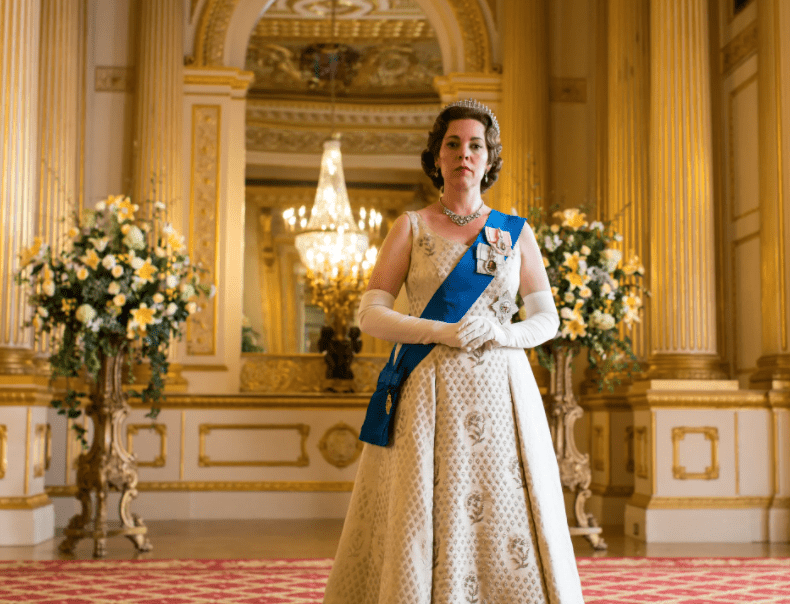
THE CROWN
Considering that the British are obsessed with flowers, it is not a surprise that shows with English characters also have invested in creating memorable floral scenes and paid attention to the details.
Many of our judges noted how master florist Helen Byrne used flowers effectively in several scenes of this popular Netflix series about the British Royal family.
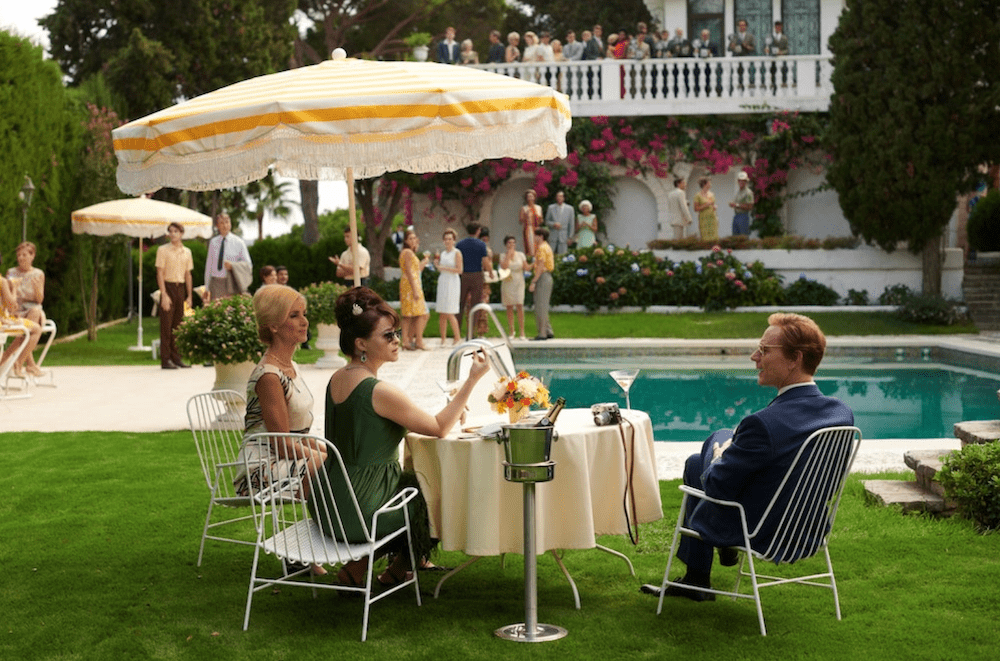
“Time and time again The Crown artfully used flower arrangements and landscapes to shadow and amplify the plot line and the trajectory of the characters,” says landscape architect Fernando Wong who now stars in the Discovery series, “Clipped” with Martha Stewart. “This was especially poignant in the Princess Margaret story line where the landscape around her oceanfront pool at her Mustique Island hideaway goes from green and lush to brown and over grown mirroring the steep decline in the sad princess’ own life. This brilliant technique was employed again by making the flowers in her party scenes when times were good glamorous and over the top and then making them wilting and forlorn during the inevitable hang over the next morning (or afternoon) in her bedroom scenes.”
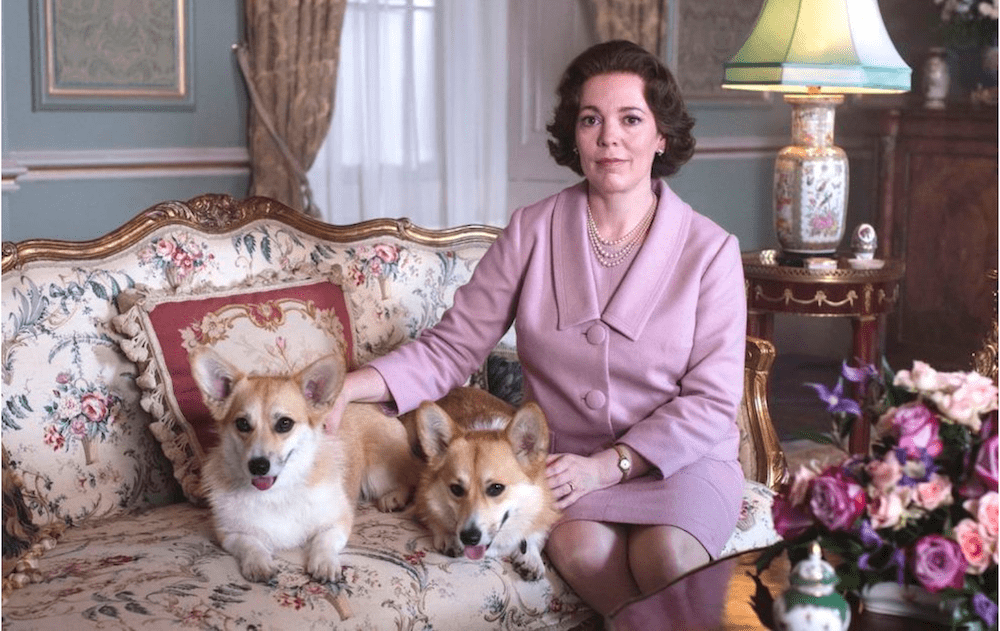
As film critic John Farr, from bestmoviesbyfarr.com and the creator of the Bedford Playhouse noted, “If it’s the British monarchy, or even if it’s just the British, there must be gardens of flowers. Prince Charles has quite the green thumb we discover as well.”
Many also noted how the tall classical flowers in stately vases surrounded Queen Elizabeth in her formal duties and were contrasted with the smaller vases of English roses and ranunculus in her private settings which exposed her humanity and inner thoughts.
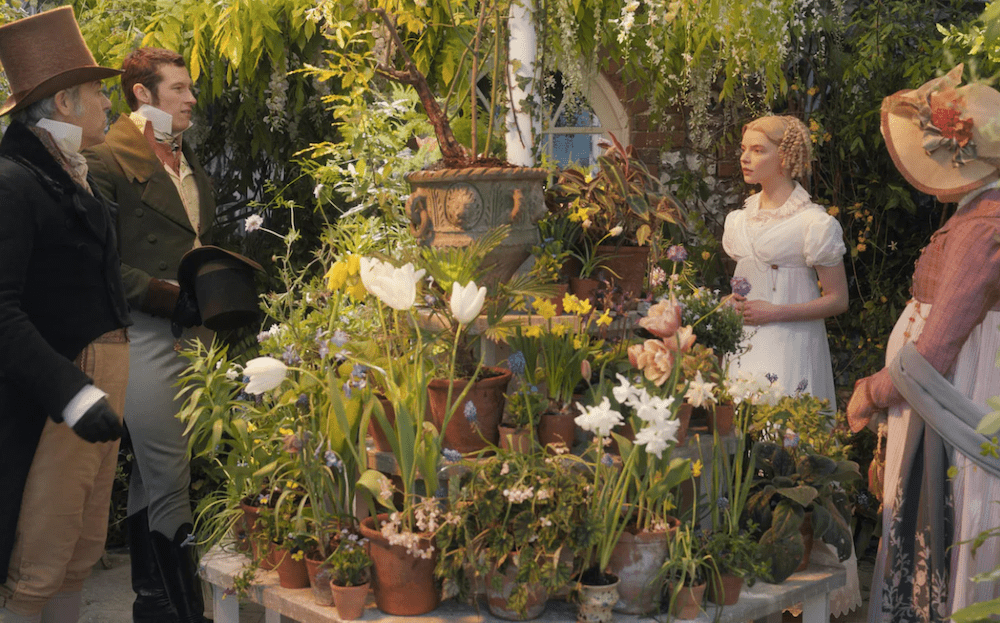
EMMA
The opening greenhouse scene in this frothy flower-filled film had many of our judges swooning. In “Emma” based on the Jane Austen classic, floral designer Tasmin Scott had cascading stems of sweet peas, jasmine and clematis draping so innocently as well as pots of beautiful tulips fully in bloom.
Our judge interior designer Young Hua called that scene “where she picks flowers for her governess was a gardener’s dream!” She meanders through the tiny conservatory with floor to ceiling flowers, collecting the perfect arrangement. The view through the arched doorway showing the center grouping is absolutely stunning!”
Others also commented on the interior scenes where the characters gathered to have tea parties.
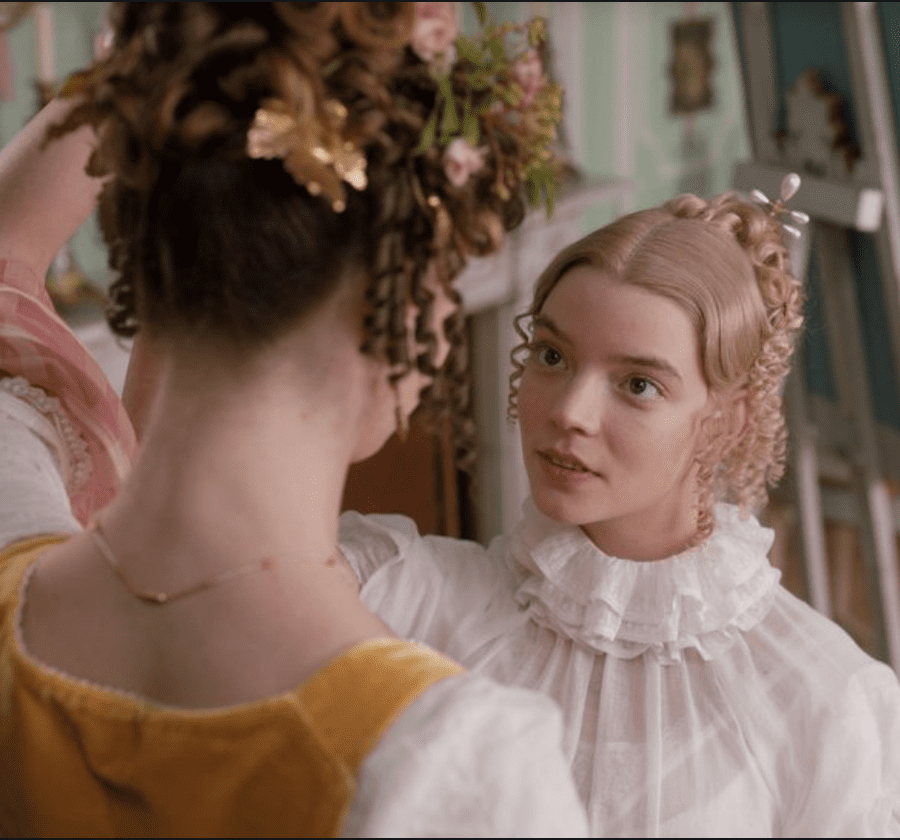
“The flowers in the interior scenes were “spectacular,” says interior designer Kit Kemp.
“From the lavish gardens to the baronial interiors, this trip to 18th century England features flowers everywhere,” said film critic Bill McCuddy. “Including the wallpaper.”
The ballroom scene is also memorable where she used hundreds of vases of English roses and sweet peas – traditional British favorites – along with Larkspur snapdragons. Other flowers appreciated during the Georgian and Regency eras were scabious, foxgloves, lupins and delicate hellebores.
“Jane Austen’s heroines are always picking flowers, pressing flowers or arranging both flowers and people’s lives,” notes judge Alexandra Peers, an art critic. “I particularly liked how lead character is proposed to amid the shrubbery, has an altercation over strawberry picking, and attends countless teas and dinner parties overwhelmed by blooms. Gardens here are almost a character, not a set.”
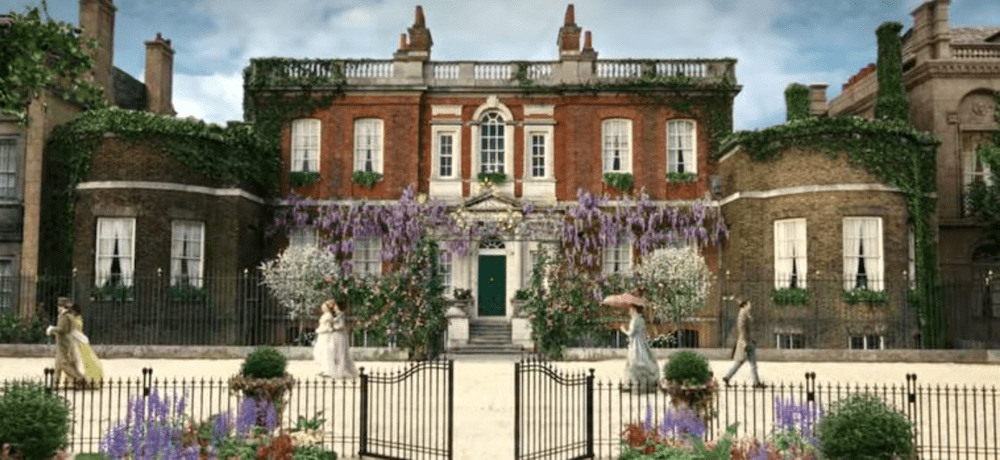
BRIDGERTON
If you want to gauge how flowers enhance a scene, just look at these before and after pictures of the “Bridgerton” exterior home with or without flowers.
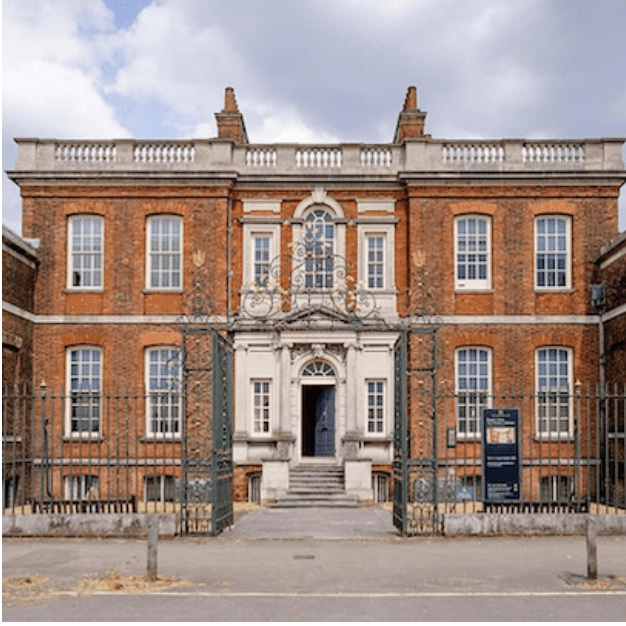
Our judge master florist Jenny Tobin, who has created florals for 20 Oscar-winning and BAFTA films, applauded the lushness of these “Bridgerton’s” flowers in the Netflix series that were created by Helen Byrne.
“It had a huge display of perfect drooping mauve wisteria and white blossoms and climbing white roses,” she says. “Perfect white blossom topiaries on each side and in the foreground of the garden a fabulous array of midnight blue delphiniums and pink astilbe. Just glorious.”
Another favorite memory for Tobin was the ball where the “girls all wore exquisite head pieces made of silk flowers, ribbons and the odd silk butterfly, and the flowers matched all the brilliant colors throughout the film.”
In fact, production designer Will Hughes-Jones told us that he actually asked for some of the silk flowers in that scene to be painted a different blue to match the heroine’s light blue dress.
Tobin also noted how there were ostrich feathers in abundance at that ball mixed in with the grandest of flowers including beautiful pink blousy peonies called Sarah Bernhard, cuscus trails {greenery} and amaranths trails. “They are like lime or red dreadlocks is my only way of explaining them,” she says. “I adore beautiful droopy flowers.”
As did others.
“This groundbreaking diverse series is blooming with florals,” says set decorator Kathleen White. “Be it the exteriors dripping with English roses and wisteria or the wedding itself replete with flora and fauna, even a pink peony finds its way into a chignon.”
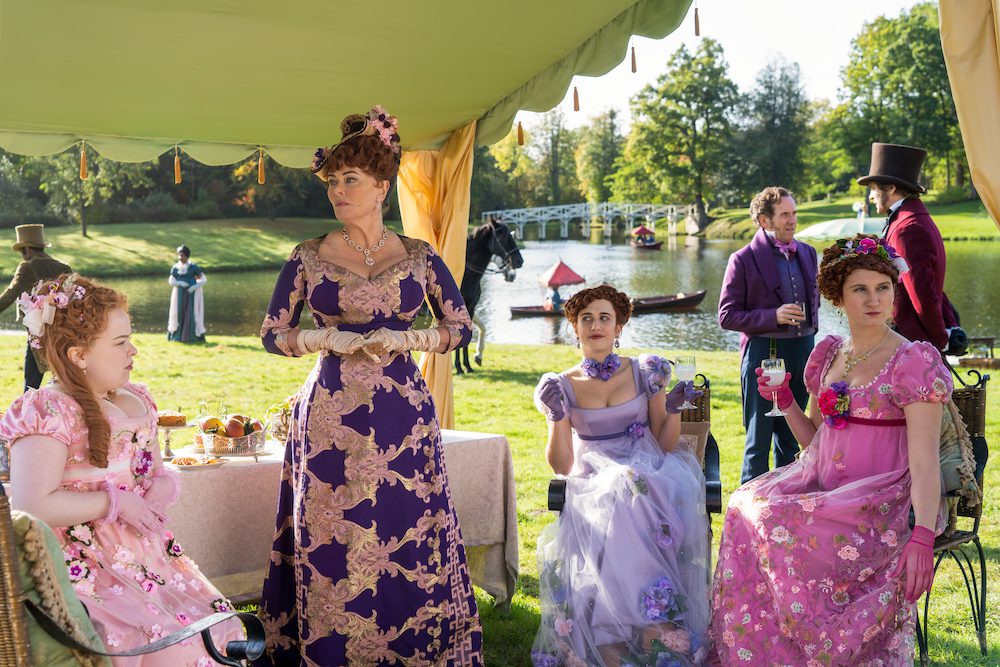
Overall, the judges appreciated how the costumes, the floral china in the tea sets, the hair accessories to the wallpapers, all pleasingly and collectively blended together to create a memorable beautiful floral experience for the viewer.
“The floral design in Bridgeton enhances the Production Design and Set Decoration in a beautifully unifying way,” adds set decorator Beth Kushnick. “It is the perfect complement to the color palette and lush visuals. In almost every scene flowers also define the period the show is set in and contributes a big part to the visual feast that is Bridgerton.”
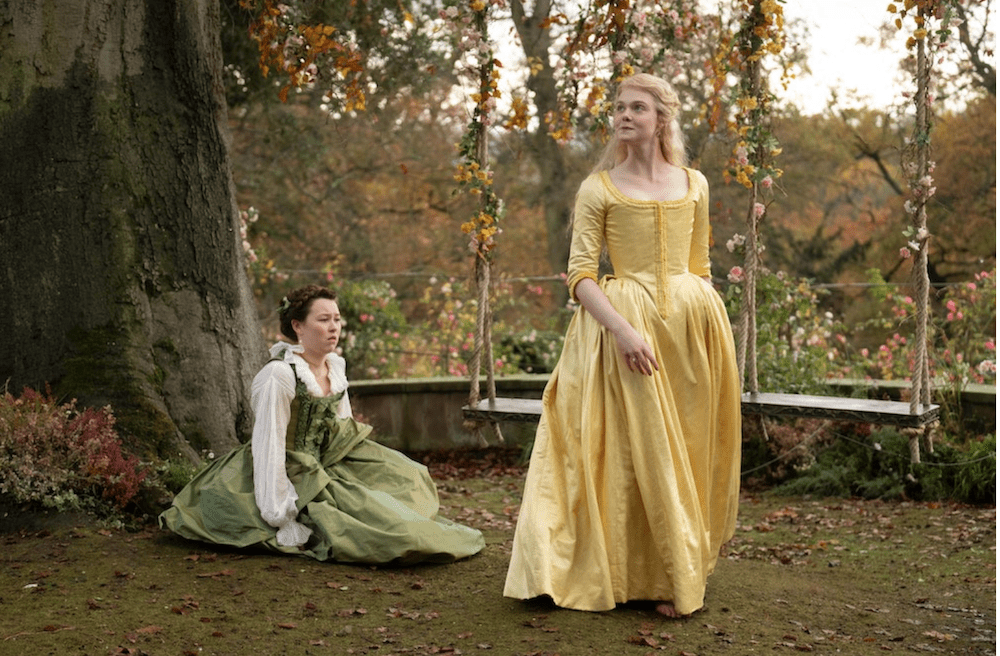
THE GREAT
The Russians, like the British, adore their flowers. In fact, the Russians have created a market just for 3 foot rose stems. So it’s not a surprise that this Hulu’s miniseries was full of flowers.
The series about the rise of Catherine the Great purposely used, as florist Tamsin Scott revealed, “over the top” presentations of flowers.
Just look at the hedges. Massive designs in baroque excessive designs.
Adds style icon Cornelia Guest, “it had whimsy and the colors were beautiful. And those hedges. The hedges were beautifully crafted.”
Furthermore, the flowers in the Russian palaces are tumbling from every part of the room which softens the images of dark wood-designed rooms often decorated with the heads of shot deer or bears.
Massive amounts of roses are used everywhere since this flower is also beloved in Russian culture and the colors were darker than the bright vibrant ones in “Bridgerton” which reflected the struggle the character was experiencing while adapting to a new foreboding culture.
As our esteemed judge Derek McLane said, “The Great” was great for flowers.
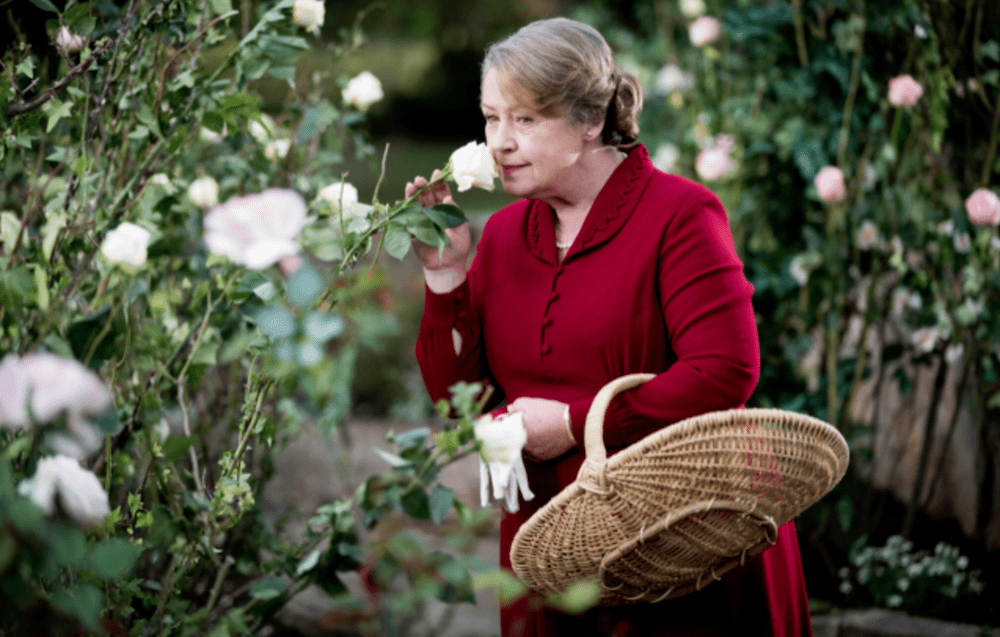
A PLACE TO CALL HOME
Because of Covid, many people discovered series that were filmed years ago as well as from other countries. “A Place To Call Home” was one of those series that attracted a huge following this year – even though it premiered in Australia in 2013 and ended its run in 2018.
Set in rural New South Wales in the period following the Second World War, it follows a nurse who has returned following the horrors of the war and who intersects into a wealthy family called the Bligh’s. Based on a true story, the scars of the past that culturally weren’t encouraged to be expressed or discussed and buried eventually bubble up and create compelling drama and insights.
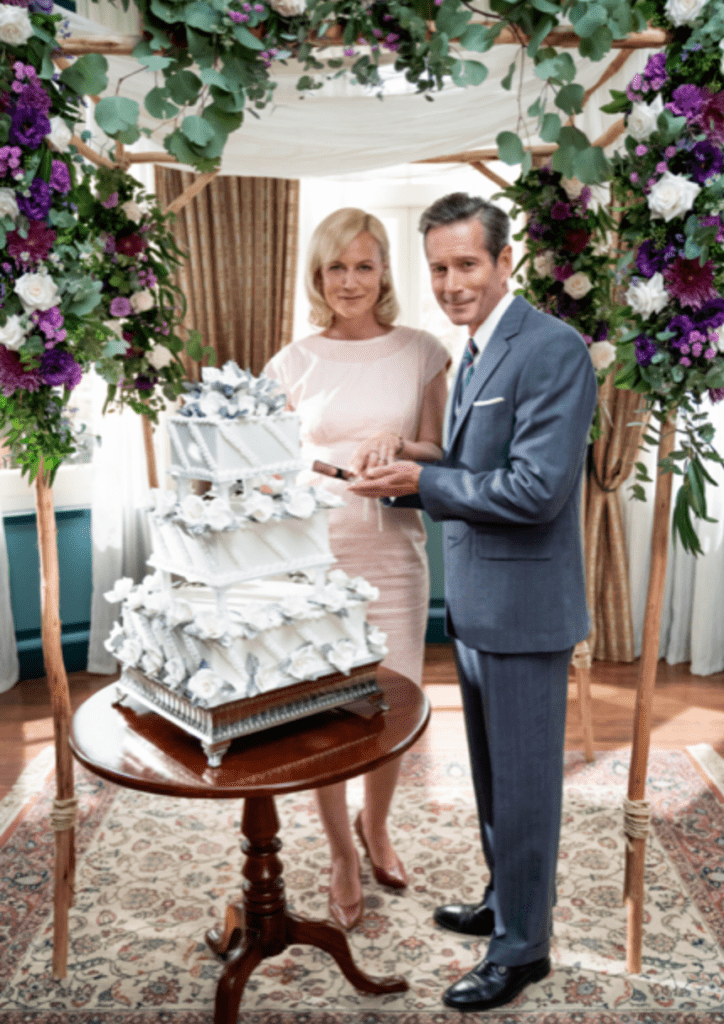
Part of the mass worldwide appeal of this show has been its set design and use of flowers which were extraordinary. In fact, the rose plays a significant role in the life of the wealthy matriarch Elizabeth Bligh and explains a storyline that links the family over the six seasons.
Production designer Fiona Donovan told us how flowers softened and enhanced the scenes so that this series could take you on a travel journey into gorgeous settings while also discussing important topics. And to be historically accurate, gardens were a great source of comfort post-war for residents to rebloom after so much loss.
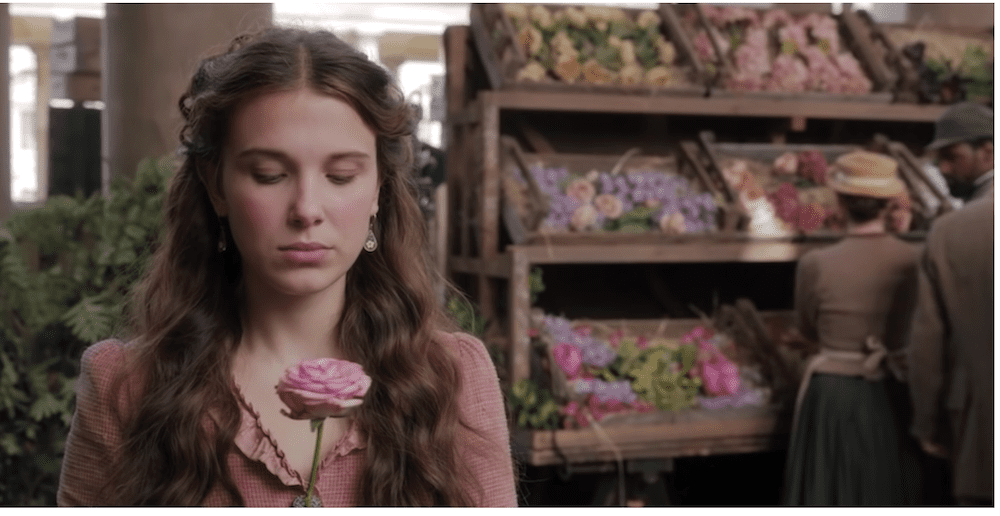
ENOLA HOLMES
Turns out that the language of flowers plays a BIG role in the Netflix series where Sherlock Holmes has a sister named Enola Holmes.
The young girl is trying to escape finishing school to find her mother who is leaving her clues about her whereabouts through flowers. Notably, the finishing school had no flowers but the family home was full of them with calming green-and-blue touches including William Morris wallpapers and gardens on the grand estate of Ferndell Hall, which was actually Benthall Hall in Shropshire.
A yellow chrysanthemum signifies neglected love or sorrow from her “mum” while a white chrysanthemum is a symbol of devoted love. Blue flowers also play a role here in clever ways as “forget-me-nots” seen in a flashback as her mother’s pin as well as in a note her mother writes that states, “the future is up to us.”
To a few judges, the chase scene created by production designer Michael Carlin in the flower shop becomes noteworthy since flower shops have been used for dramatic scenes. Film critic John Farr considers Cary Grant’s scene in To Catch A Thief a classic while others like Martin Scorsese’s Age of Innocence. One of my favorite series with exuberant, fabulous and creative floral design is “House of Flowers,” (Casa de Flores) which is set in a Mexican flower shop and truly is an orgasm of flowers in every scene. However, perhaps because Enola Holmes is more known and used flowers to move along dialogue and plot, it won over “House of Flowers.”
The rose for young love was also used cleverly conceived. Enola is given one that has white with some red in it – representing innocence along with passion.
After all, consider this lovely quote that Sir Arthur Conan Doyle gave Sherlock Holmes to say in the original books.
“Our highest assurance of the goodness of Providence seems to me to rest in the flowers. All other things, our powers, our desires, our food, are really necessary for our existence.
“But the rose is an extra. Its smell and its color are an embellishment of life, not a condition of it. It is only goodness which gives extras and so I say again that we have much to hope from the flowers.”
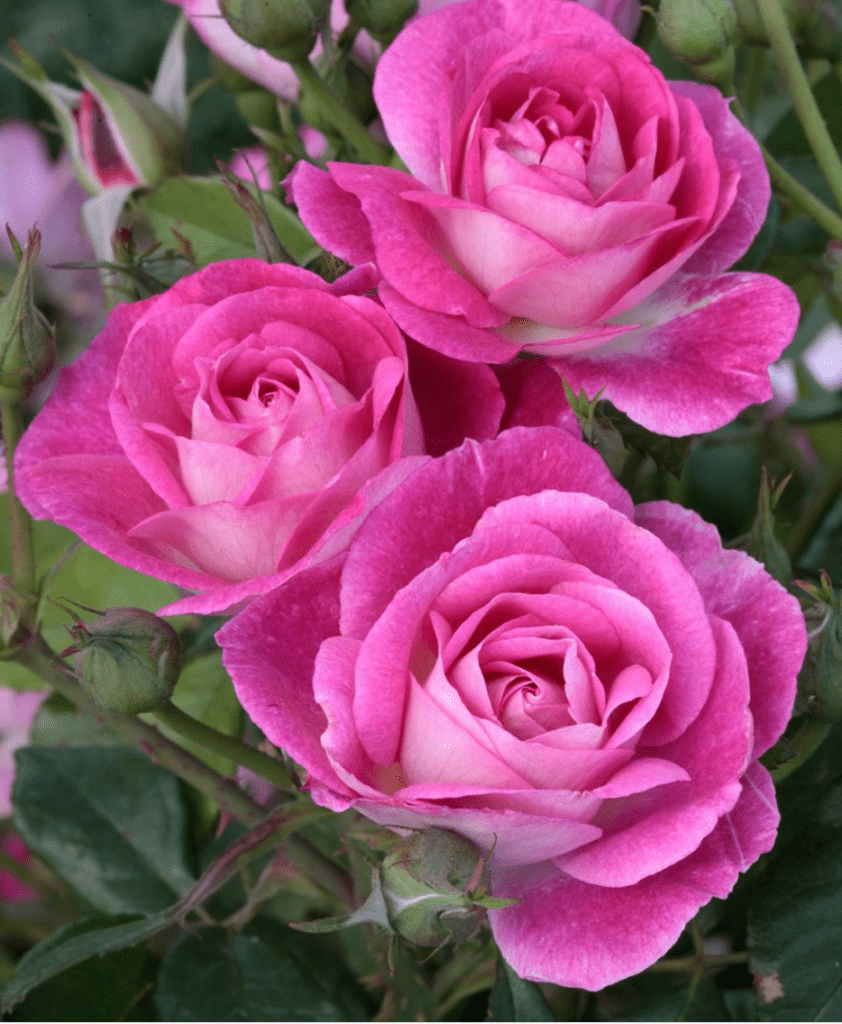
Although the judges will give their final votes for April 22nd, we hope you will vote for the fan favorites.
Here is the link. – https://aspiremetro.com/bdr-florals/
